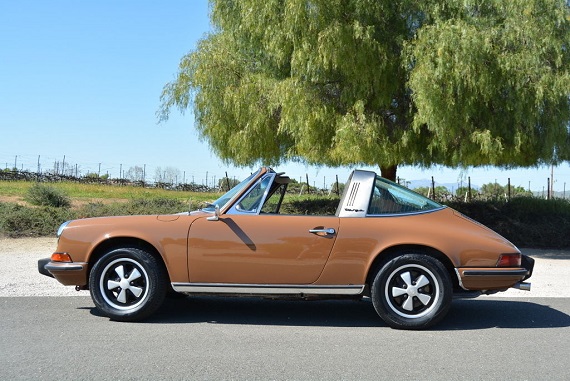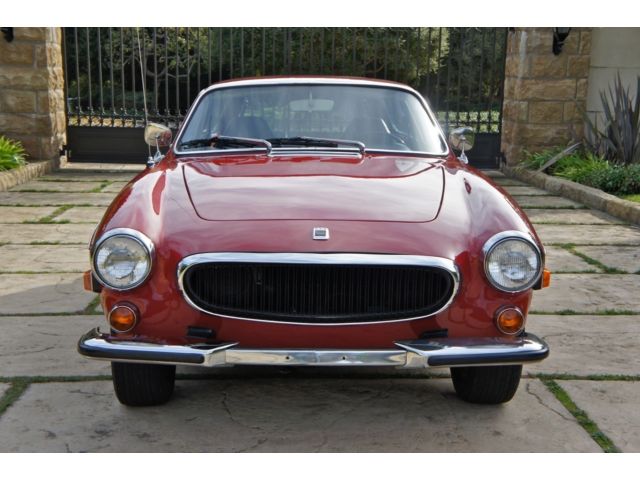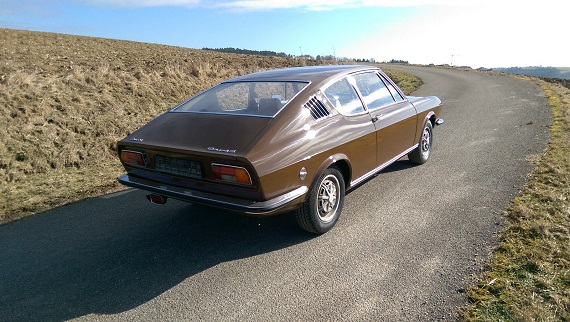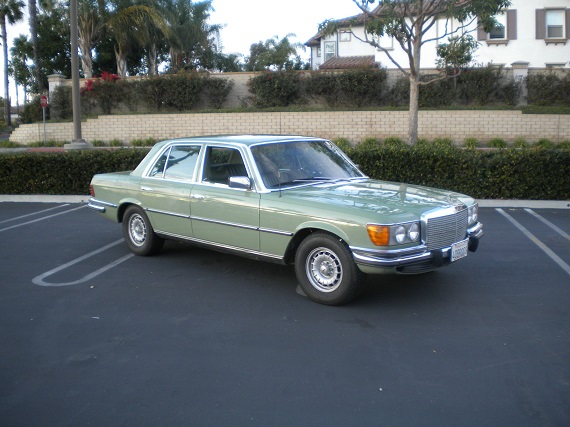Perhaps like a neglected middle-sibling, the mid-range model of any car can live a somewhat precarious existence. Lacking the comfort or performance (depending on what sort of car we’re talking about) of the top-of-the-line model and more expensive than the entry-level model, that car in the middle can sometimes seem neither here nor there. They’re stuck and sometimes go unnoticed. For much of the 911’s life there was only the entry-level 911 or the high-performance 911S, but for the early cars we had another option: the 911E. First released in 1969, the E took many of the aspects of the 911T and simply made them better. It featured a mechanically fuel-injected flat-six engine, similar, though with less power, to that of the 911S, rather than the carbureted engine of the 911T. In addition, a more comfortable strut suspension was made available along with ventilated disc brakes, while the interior was upgraded to improve comfort and refinement. By the time we arrive at the final model year in 1973, all 911 engines had increased to 2.4 liters and featured Bosch fuel injection with the E and S being mechanically injected and the T eventually using the CIS system that later 911s would employ until 1984. During its brief run the E served as the refined, luxurious, counterpart that was to balance the decidedly sporty experience of the S and the more basic experience of the T for buyers who wanted more from their 911, but leaned toward the luxury side of the spectrum. The example we see here comes from the final model year: a Sepia Brown 1973 Porsche 911E Coupe, located in California, with 87,000 miles on it.
Tag: 1973
Brown is always a tough car color for most people, even if it does possess a period-correct quality that many look for in classic cars. Sepia Brown is a color we come across pretty frequently on long-hood 911s, but then it disappears once we get to the mid-year 911 and beyond. It seems to have been a color that briefly was in demand, but that demand quickly fizzled. Part of me understands that completely as I have a greater appreciation for metallic browns than their non-metallic counterparts, and while there is a lightness and earthiness to Sepia Brown I think ultimately it would wear on me. The 911E, however, is a model I love and these early Targas I find particularly appealing. A 911E Targa offers one of the best chances at getting into a long-hood 911 while avoiding six-figure price tags (and even with these cars that can be difficult), while still getting a reasonable degree of performance as compared with the entry-level 911T. This one should fit that bill fairly well: a Sepia Brown 1973 Porsche 911E Targa, located in California.
CLICK FOR DETAILS: 1973 Porsche 911E Targa on eBay
Comments closedThere’s a running joke here at GCFSB regarding Volvos and SAABs. Without exception, every time we post one someone comments either here or on our Facebook page that those two manufacturers aren’t German. It doesn’t really matter that we explain nearly every time that though we know this, we still enjoy to look at a super Swede from time to time since – let’s face it – a majority of people on Facebook don’t actually read the articles that are posted, but rather just react to the headlines. Now, we could actually get into a discussion about how the Swedes are actually a Germanic based tribe if you go back far enough, or how many of their engineering principles fall in line with those of their Southern neighbors. We could mention that many of the newer Volvos and SAABs actually utilized German derived chassis from either Ford Europe or GM’s Opel division. But that would be pointless since those arguments don’t apply to today’s example, the P1800ES. You see, Volvo is mostly regarded as builders of very slow moving, very safe and very conservative boxes – but go back a few generations, and Volvo threw a few curve balls as the plate. None were more curvy than the P1800, a pseudo-sports car with stunning looks available in coupe version or the more rare 2-door wagon:
CLICK FOR DETAILS: 1973 Volvo P1800ES on eBay
5 CommentsOne of the benefits to U.S. automobile enthusiasts of the recent global economic slowdown is the raise in value of the dollar relative to the Euro. For some time, the Euro was nearly a two to one ratio – it made contemplating importing vintage cars hard to stomach, because you needed to double the price and then deal with the headache and cost of importing the car. With it much closer to one to one as it is today, perusing the halls of German eBay suddenly becomes less of a pipe dream and more of a potential reality. Of course, if you’re going to be going through the difficulty of importing something, it better be worth it! For me, there are a plethora of rare Audis that I’d love to import. However, it does seem silly to import a S4 or S6, for example, since they were available here as well and you could get a pretty nice example. No, it seems to make more sense to look for something that you just don’t see on a regular basis – like this 1973 Audi 100 Coupe S, for example:
CLICK FOR DETAILS: 1973 Audi 100 Coupe S on eBay.de
3 CommentsYesterday Paul wrote up a rare 1990 Mercedes-Benz 560SE; for the W116 and W126, the short wheel base cars almost seem to be a bit odd. The long lines of the S-Class, especially in the case of the W126, seem normal with those long back windows. But for me, the W116 almost looks a little out of proportion in “L” guise. In part that’s helped when you delete the large bumpers that most U.S. bound examples had – in original Euro configuration, it looks much better in my mind. But drop the wheelbase to the “SE” version and the W116 just looks right to me. This ’73 example is a great case in point, with period green over green leather and Bundt alloys:






